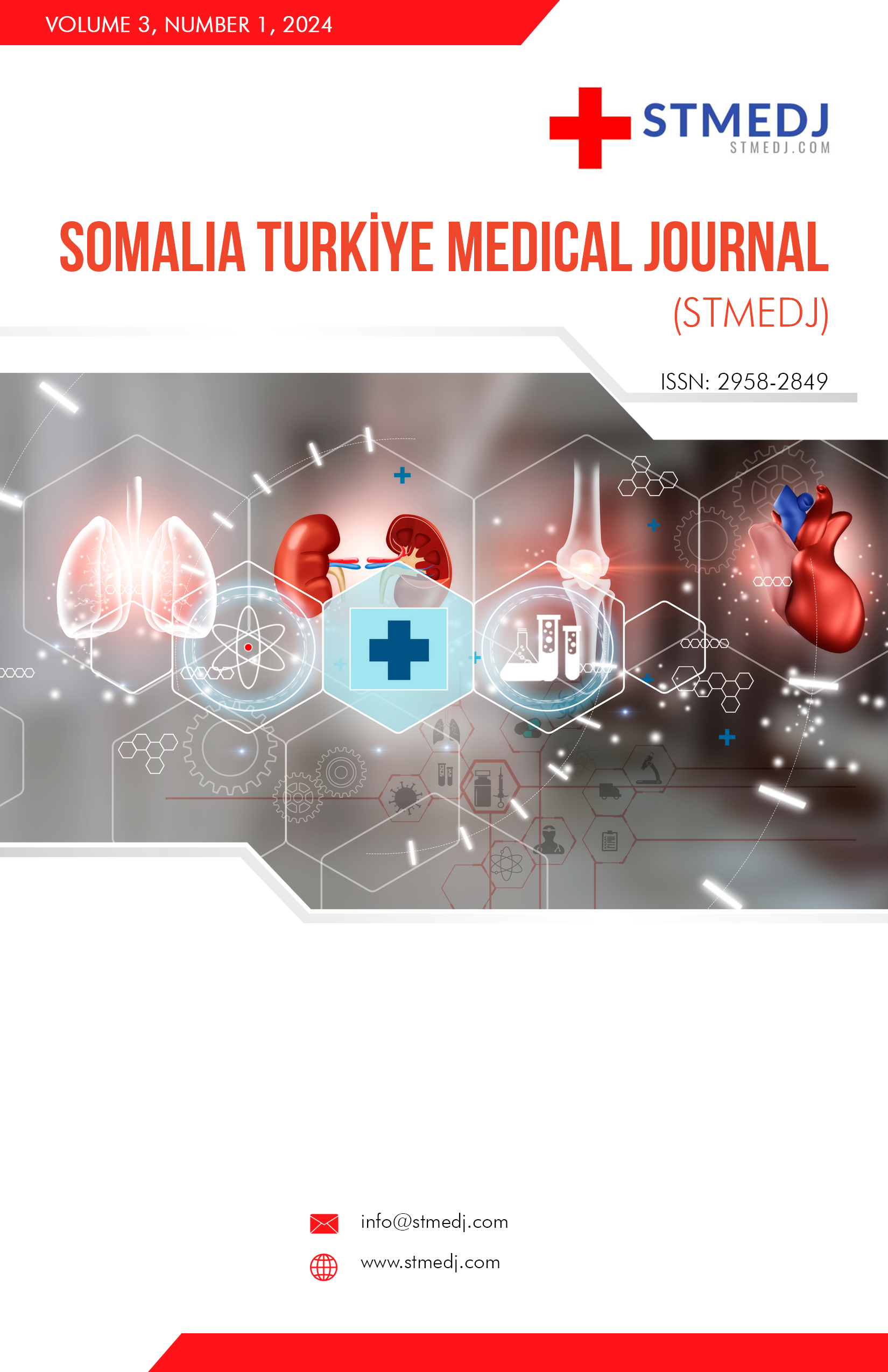Assessment of the Characteristics of Traumatic Urogenital Injuries at a Tertiary Care Center: First Report from Somalia
DOI:
https://doi.org/10.58322/stmj.v3i1.42Keywords:
Urogenital Injury, Trauma, SomaliaAbstract
Objective: Urogenital injuries (UGIs) are present in approximately 10% of adult and less than 3% of pediatric trauma patients. To date, no reports have been published regarding urogenital injuries in Somalia, a sub-Saharan African country. We aimed to analyze the data of urogenital trauma patients who presented to the emergency department of the only tertiary care center in Somalia.
Materials and Methods: Patients who presented to the emergency department of our institution following trauma between January 2019 and December 2022 and were admitted with the diagnosis of UGI constituted the target population. The collected data included demographic characteristics, type of trauma, involved urogenital organ, admission site, patient management type, and survival.
Results: Overall, 2426 trauma patients presented to the emergency department. Among these patients, 116 (4.8%) had UGI. The mean patient age was 28.31±5.2 [1-73]. Most (83.6%, n=97) patients were male. Kidneys were the most commonly injured organs (41.4%, n=48), followed by the urinary bladder (17.2%, n=20) and testis (13.7%, n=16). Nine patients with renal trauma underwent nephrectomy. Among 20 patients with bladder injury, half underwent surgical repair. Ten of 16 patients with testicular trauma underwent orchiectomy due to severe rupture. All 12 patients with penile injuries underwent primary repair. Among 10 (8.6%) patients with urethral injuries, 4 underwent immediate primary repair, 3 underwent endoscopic realignment, while the remaining 3 needed cystostomy and delayed urethroplasty. The mortality rate was 10.3% (n=12).
Conclusions: Surgical exploration was commonly performed due to the severity of the traumas and the presence of adjacent organ injuries. This finding arises from the fact that Somalia is a country affected by terrorism and low-density war.

Downloads
Published
How to Cite
Issue
Section
License
Copyright (c) 2024 Somalia Turkiye Medical Journal (STMJ)

This work is licensed under a Creative Commons Attribution-NonCommercial-NoDerivatives 4.0 International License.

